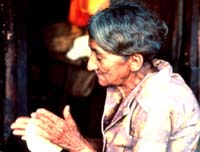Protecting and improving the
health of indigenous peoples and other vulnerable groups
HDE addresses the health of
vulnerable groups through a focus on two areas: the health of
indigenous peoples and migrants and health
|
The
challenge:

making the health of indigenous peoples a higher
priority
|


|
Indigenous peoples continue to be subject to systematic denial of their fundamental human rights – to cultural identity, to land, to liberty, to health, and to life itself. Life expectancy at birth may be as much as 10 to 20 years less for indigenous peoples than for other population groups. Infant mortality is often 1.5 to 3 times greater than national averages. Malnutrition and communicable diseases, such as malaria, yellow fever, cholera and diarrhoea continue to affect a large proportion of indigenous peoples around the world. In addition, non-communicable and lifestyle-related diseases disproportionately affect indigenous peoples in industrialized countries.
Our Goal
Identifying effective health strategies and promoting the most effective research and policies to improve the health of indigenous peoples.
What have we achieved so far?
- report of the international consultation on Health of Indigenous Peoples
- mapping exercise to establish what research institutions globally are addressing indigenous health issues
What is in the
pipeline?
- evaluation of the nutritional status of indigenous peoples and development of indicators in this area
- applied health research program, involving identification of critical health issues and problems in partnership with indigenous peoples, and systematic collection of national data by ethnicity
|
![]()